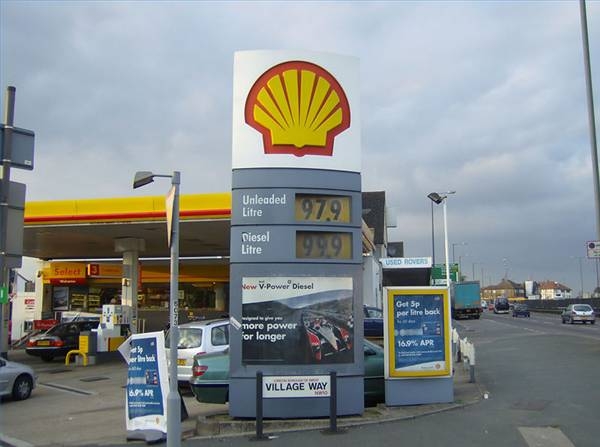
Unleaded gasoline is the most common fuel used in automobiles around the world. It goes through elaborate processes and exhaustive tests, and is treated with special chemicals and additives before you fill up your tank so that it burns properly inside your car's engine to produce the least harmful emissions possible. And that's just the beginning.
When you start the engine in your car, the fuel injection system begins to spray a predetermined amount of unleaded gasoline into the intake manifold. There, it is mixed with a predetermined amount of air. The mixture enters the combustion chamber through the intake valves, where it is compressed by the piston. Using electrical voltage, the spark plug then delivers a tiny ball of fire that expands smoothly and quickly throughout the mixture, creating tremendous heat and pressure to propel the piston down. This energy is translated into rotating movement delivered to the car wheels.
Still, for your car engine to operate properly, air and gasoline have to be mixed in the correct amount to enter the combustion chamber. The correct air-fuel ratio should be 14.7 parts air for 1 part gasoline. A malfunctioning engine system may produce a leaner mixture--leaving the engine with a lack of power--or a richer mixture that results in unburned gasoline and black smoke coming out of the tailpipe.
In the 1970s, unleaded gasoline came to replace regular gasoline when state governments throughout the United States began to make the use of catalytic converters mandatory in all vehicles. Refineries now mix additives into unleaded gasoline to reduce harmful emissions, combustion power and prevent engine problems. This process translates into an octane rating, which basically determines the gasoline's ability to resist engine ping or knock--improper fuel combustion. Regular engines, with a low compression ratio, use gasoline with an octane rating of 87, which is what you normally buy for your car. Premium gasoline with an octane rating of 93 is aimed for high compression and turbocharged engines.
Unleaded gasoline is one of several products made from crude oil, a product extracted from oil fields thousands of feet underground since the 20th century. Crude oil is made up of highly flammable hydrocarbons in semisolid, liquid and gas form. The hydrocarbon pumped out of the ground is sent to a refinery, where it is transformed into more useful products including wax, grease, natural gas, solvent, insecticide, jet fuel and gasoline.
Unleaded gas can be one of the most hazardous combustibles in your garage. A cup of gasoline is enough to spark a huge fire and destroy your vehicle. At home. If you have to store gasoline in your garage, use only an approved, sealed container and clean any gasoline spills immediately.
